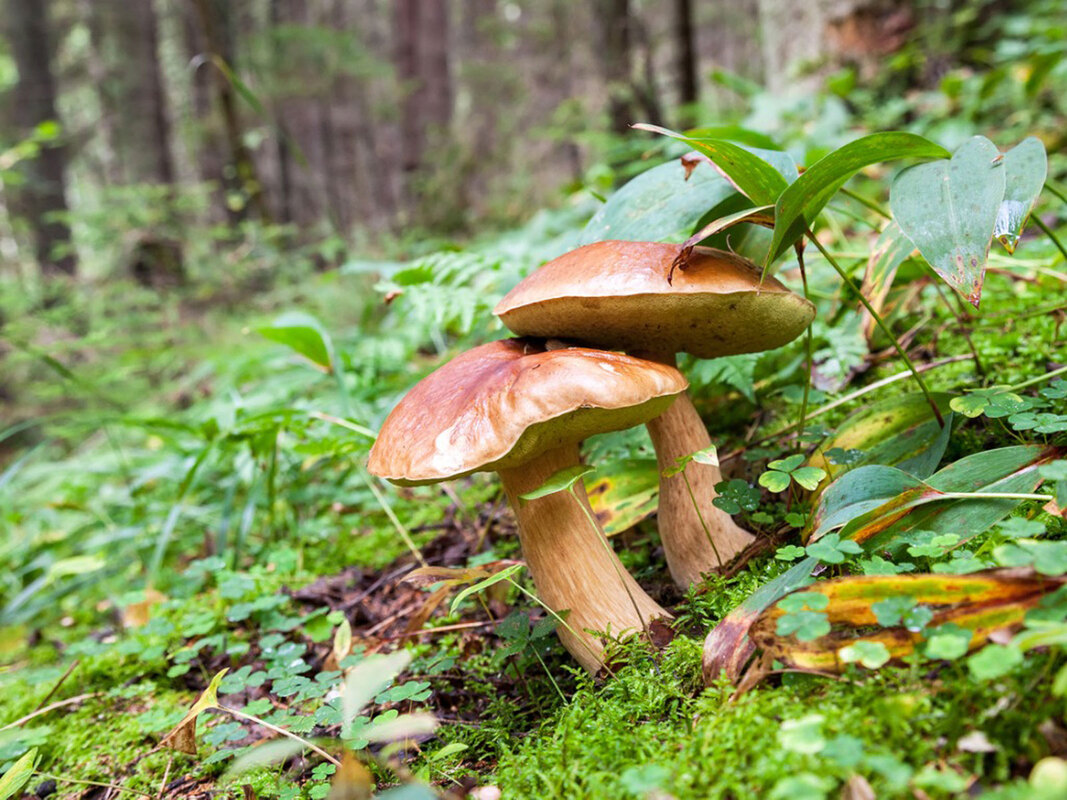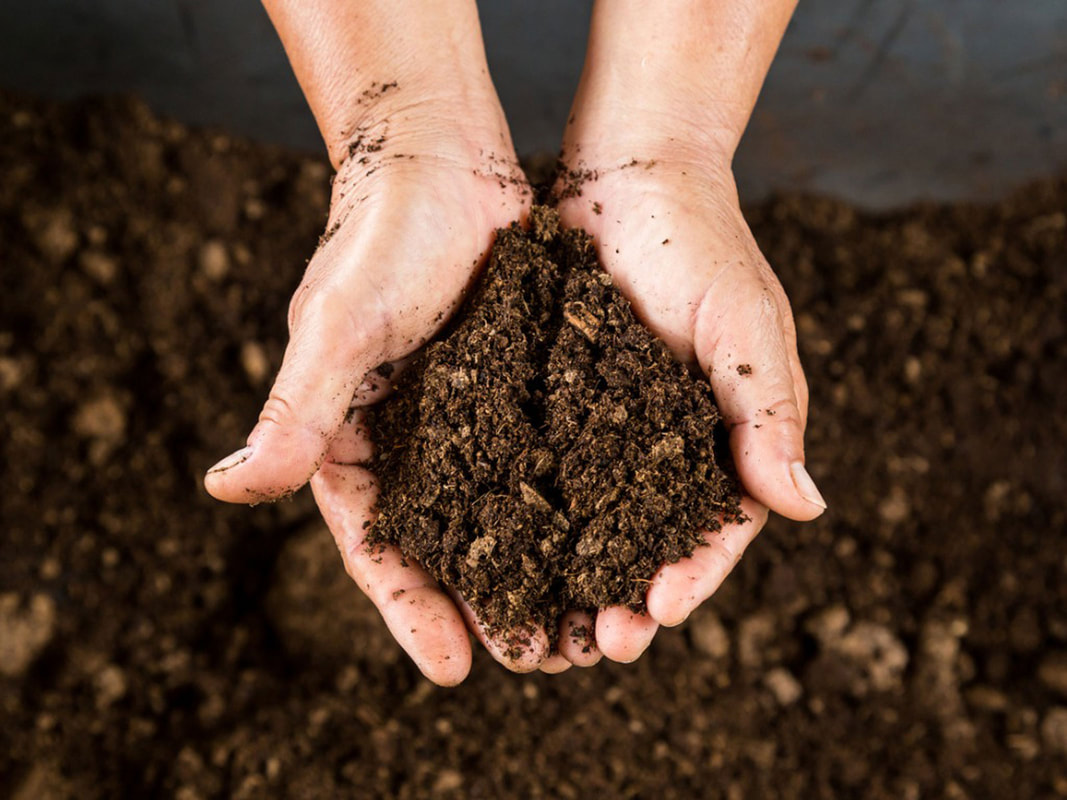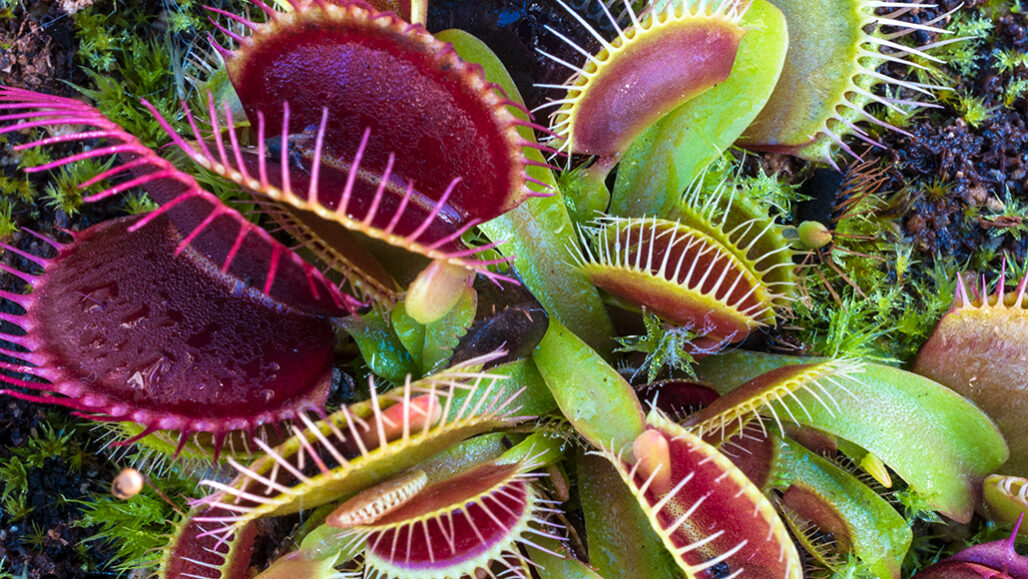|
By JAN KUSMIREK, IPF Chair UK, Essential Oils Expert, Aromacosmetologist, and Aromatherapist "Odours are the Best Way to Judge Soil" PlinyIt is the time when chirp of crickets and grasshoppers end and the squirrels and mice collect the winter store of nuts. Autumn is not quite here although the Equinox has passed. In my garden the Linden tree has its first few yellow scatterings of leaves begin to turn but not yet fall. The green husked walnuts lie on the dewy grass. It is the Wych Hazel that has lost its sugars to glorious reds and yellows, browns and russets the earliest harbinger of real autumn. These are all visual signs of what we sense within the shortening days in the Northern hemisphere but there are more subtle signs of change that we might not so easily have observed. For a while we have possibly noticed a different feel to the air these last few days. Was it cold or moistness a certain sharpness or the opposite a lingering warmth? All these feelings can be related to our nose and its related sense of touch. Things feel different and smell different. Unless trained few give attention to the smell of the seasons. Oddly in contrast, many fragrance brands take the seasons as markers for their creations and subsequent advertising. So what are we smelling as the seasons change? Most people are familiar with the fresh smell of earth or soil after rain. Certainly the dew effect will heighten our perception as it evaporates but dry earth also has its aroma. Turning soil over provides us with a gamut of odours. Clay has its own smell as does peat and surprisingly sand. The smell of the desert, apparently dry and empty except for sand and rock is known to any desert traveller whether Gobi or Sahara. Each land has its own aroma without any of the additions of cultural and vegetation smells. The Roman philosopher and scholar Gaius Plinius Secundus, commonly known as Pliny the Elder writing in his History of Nature in the first century CE recorded what every farmer had known since the birth of agriculture, ‘odour is the best way to judge soil’. The idea of distilling a dry rock or soil seems at first glance a bit odd but it was done in India where it is called it “matti ka attar” or “earth perfume. It is produced from the local earth coming from such as dried up water-holes, lakes and wells. The is half baked and then distilled, the vapours from the still go directly into a base material, usually sandalwood oil, or for cheaper products, liquid paraffin. It was Australian researchers Isabel (Joy) Bear and Richard Thomas who by steam distilling rocks that had been exposed to warm, dry conditions in nature, discovered a yellowish oil – trapped in rocks and soil but released by moisture – this was responsible for the smell given off by the soil. This oil was named petrichor drawn from the Greek and construed to mean the blood of the gods. Following the ideas of the Gaia hypothesis originating with James Lovelock and Lyn Margulis it might better be called gaia-ichor the breath of Mother Earth! The microorganisms themselves also have their own distinct aromas. Interestingly Lyn Margulis as a scientist is known mostly for her work with micro-organisms for it is now known that it is not the mineral element that provides the aroma but the accumulation over time, perhaps immense time of the debris of the once living and dying communities that once colonised it. In other words, the odour source is organic and produced by the degradation of material by bacteria. This Petrichor smell has been analysed as a combination of several fragrant chemical compounds, some have yet to be identified but one is 2-isopropyl-3-methoxy-pyrazine (IPMP). This is also a characteristic of Cabernet Sauvignon and Sauvignon Blanc grapes and contributes strongly to their odour. The primary contributors to petrichor’s complex aromatics are the actinobacteria, a genus or family of soil-dwelling bacteria so important in producing the all-important soil fertility component, humus, which too has its own distinct aroma, the smell of good sweet compost! So much so that it has its own fragrance brand, Humus by Michele Bianchi. Amongst the genus of this actinomycete family are Streptomycetes which inhabit soil and are great decomposers. They also produce more than half of the world's antibiotics and are consequently invaluable in the medical field. The antibiotic Streptomycin was discovered in 1943 and it saved my life when as a young boy I suffered pneumonia. Treatment with this recently discovered drug was relatively unexplored and I remember the smell very well. Today many years later I relate it to Vetiver in my smell memory bank and the earthy taste of beetroots. Streptomyces, these soil-dwelling bacteria create the substance known as geosmin, the smell which I remember. Geosmin is a terpenoid that is also called likened to an earth smell. From the Greek it simply translates as earth smell. I would argue that whilst we recognise ‘it’ as a single smell it varies from where the source was a taken. We humans are incredibly sensitive to geosmin and can detect very low concentrations. Of course this complex material with its many components is synthesised to a commercially available single chemical Octahydro-4,8a-dimethyl-4a(2H)-naphthol sold as geosmin. So two names that show the difference between the scent of soil after rain, petrichor and the smell of earth in hand geosmin. This time of year is also the best period for mushrooms and fungi in the forest. All are there to convert the fallen leaves and needles that will release their volatile elements to the soil but also provide the aromatic zephyrs that sweep around us. Some estimates suggest that any given time over ten billion tons of leaves and conifer needles are mouldering away scenting the autumn air. All this decomposition around us can be called the smell of decay and death. What a morbid thought for the released terpenoids and ethyl alcohols that constitute the hidden aromas. Usually because rain is associated with the ‘earth smell’ romantics refer to the smell of life or Spring but perhaps taking a cue from nature, we could call these odours at this time, the smells of rest and repose, for this is the time of pause preluding regeneration to come. As I hinted at earlier these smells are of the localised earth so they reflect a particular part of the world, what it has been made of or from, so although chemically analysed in part, the whole represents far more than the synthsised single molecule, euphemistically called nature identical, as generally used in perfumery. Examples of geosmin containing or earth smell fragrances are Terra by ODUR, Starck Paris - Peau’Ailleurs or Le Labo - Baie 19. In descriptions patchouli and amber seems common in the compound. What I am describing is the incredible world of soil which is the Foundation of Life. The analysis of the odours emitted always fail to account that the source always emits as a blend. For example It is easy to account that all mushrooms smell mushroomy due to a specific octenol but squeeze or chop a mushroom and the nature of the differences in the blend become clearer for the notes of citrus peel can be found. Dry them, for most wild crafted mushrooms are destined to be dried for eating and the flavour that results bears witness to the complexity of the odour that may have not so readily been discerned before. A particular type of soil prevalent where I live is peat and this certainly has its own world of smell and flavour. Leaving aside the burning of peat for another day which flavours whisky (what is better than a fine malt when the first fire of autumn is lit whilst sitting in a comfy chair) peat soils are unique. Current concerns about climate changes show that peat is a great carbon store. Peat is basically decomposed organic plant matter that has been compressed in the ground for thousands of years, essentially young coal. It is not peat that flavours whisky but rather the malted grain that absorbs the smoke from the peat fuel used in the drying process. At this time of year, peatlands are likely to be at their driest before the autumn rains come in. Largely overlaid with water retaining mosses at low level, the last heather blooms on upland moors. The contrast is between wet and dry aromatics. The wetlands are home to the mosses and sedge grasses or rushes. Underfoot will invariably be the water retaining sphagnum moss. Looking hard one can find the small insectivorous plant called sundews or Venus FlyTrap.
They exude a sweet-smelling nectar, which attracts gnats, fruit-flies, and other small insects. The overall smell of such land depends upon the level of moving or stagnant water. This brings us directly to the bacteria of decomposition or even fermentation where the lack of oxygen makes a difference to the odours. All degradation, composting or preservation is either aerobic (with oxygen) or anaerobic (without oxygen). Decomposition is never odour free. The upland moors still hold the dead or drying flowers of the variety of heathers that gave the purple covered hills of the summer. Now the dry flowers are drying amongst the first brown fronds of bracken and the sweet honey smell of heather, broom and gorse are gone. A dry dust smell of pepper pervades the air and a slight tang of resins can be found as one pushes through the brush. It is time to reflect and recompose one thoughts for the coming winter. There is still time to stretch and lie in the sun but evening comes and a shawl is needed earlier for no amount of longing, lounging or pretence will stop the chill. The furry creatures hunker down for the night or the long sleep of hibernation amongst the roots that smell of so many note that succour life and recycle it with odour signals unknown yet to man. Molecules of communication and emotion.
0 Comments
|
AuthorsAuthors are gardening and essential oils experts in a variety of categories including distillation, plants healing and cleansing properties. Archives
May 2023
Categories
All
|
- Home
- Introduction
- Choose your Plan
-
Choose your Plants
- Alecost
- Anchusa
- Angelica
- Balkan Sage
- Balm
- Basil Sweet & Bush
- Bergamot
- Borage
- Calaminth
- Camphor Plant
- Caraway
- Catmint
- Chamomile
- Chervil
- Chives
- Clary
- Comfrey
- Coriander
- Dill
- Elecampane
- Fennel
- Fennel Florence
- Feverfew
- Garlic
- Germander
- Giant Catmint
- Herb Patience
- Horehound
- Hyssop
- Lad's Love
- Lady's Maid
- Lavender
- Lily of the Valley
- Lovage
- Lungwort
- Mace
- Mallow
- Marigold
- Marjoram
- Melilot
- Mints
- Old Lady
- Parsley
- Pennyroyal
- Rose
- Rosemary
- Rue
- Sage
- Salvia Virgata Nemorosa
- Santolina Chamaecyparissus
- Savory
- Sorrel
- Sweet Cicely
- Tansy
- Tarragon
- Thyme
- Vervain
- Woad
- Wormwood
- Workshops
- Q & A
- Blog
- Contact
- Home
- Introduction
- Choose your Plan
-
Choose your Plants
- Alecost
- Anchusa
- Angelica
- Balkan Sage
- Balm
- Basil Sweet & Bush
- Bergamot
- Borage
- Calaminth
- Camphor Plant
- Caraway
- Catmint
- Chamomile
- Chervil
- Chives
- Clary
- Comfrey
- Coriander
- Dill
- Elecampane
- Fennel
- Fennel Florence
- Feverfew
- Garlic
- Germander
- Giant Catmint
- Herb Patience
- Horehound
- Hyssop
- Lad's Love
- Lady's Maid
- Lavender
- Lily of the Valley
- Lovage
- Lungwort
- Mace
- Mallow
- Marigold
- Marjoram
- Melilot
- Mints
- Old Lady
- Parsley
- Pennyroyal
- Rose
- Rosemary
- Rue
- Sage
- Salvia Virgata Nemorosa
- Santolina Chamaecyparissus
- Savory
- Sorrel
- Sweet Cicely
- Tansy
- Tarragon
- Thyme
- Vervain
- Woad
- Wormwood
- Workshops
- Q & A
- Blog
- Contact




 RSS Feed
RSS Feed

